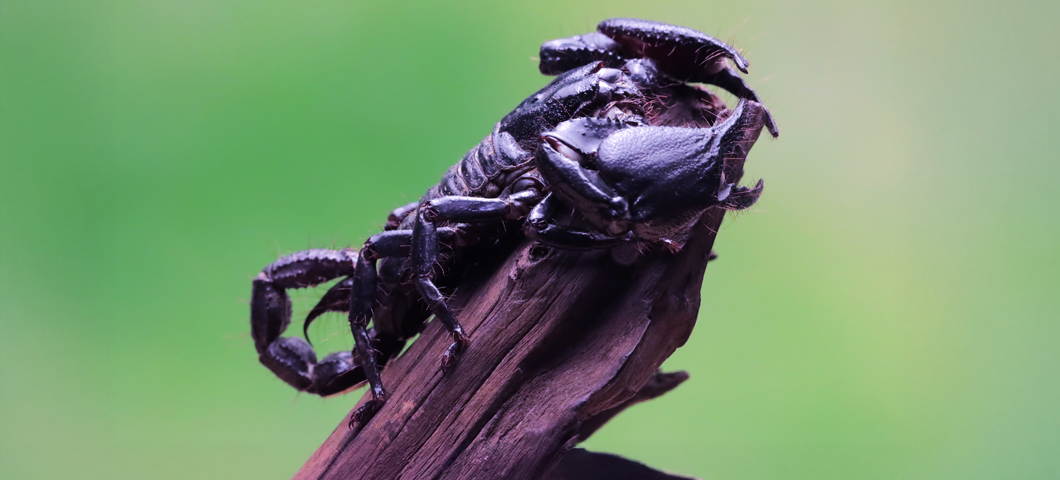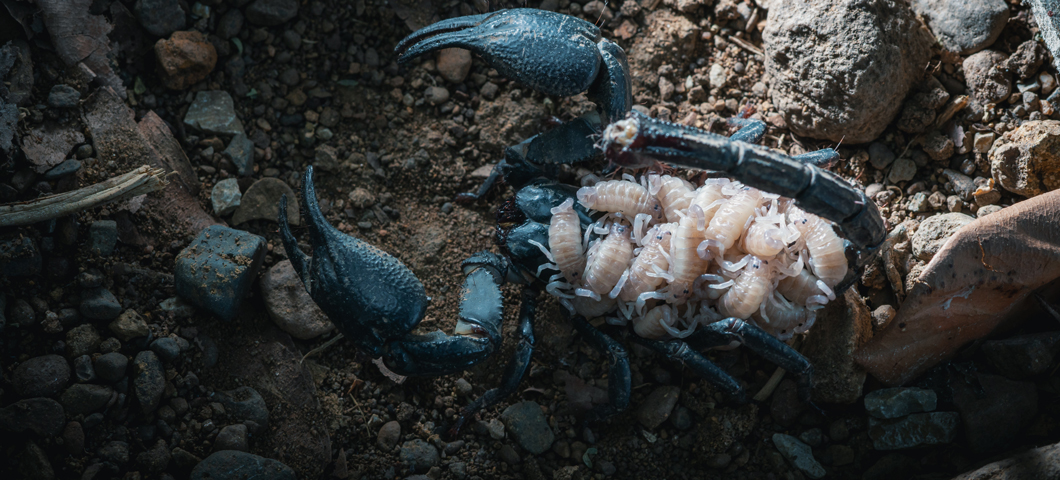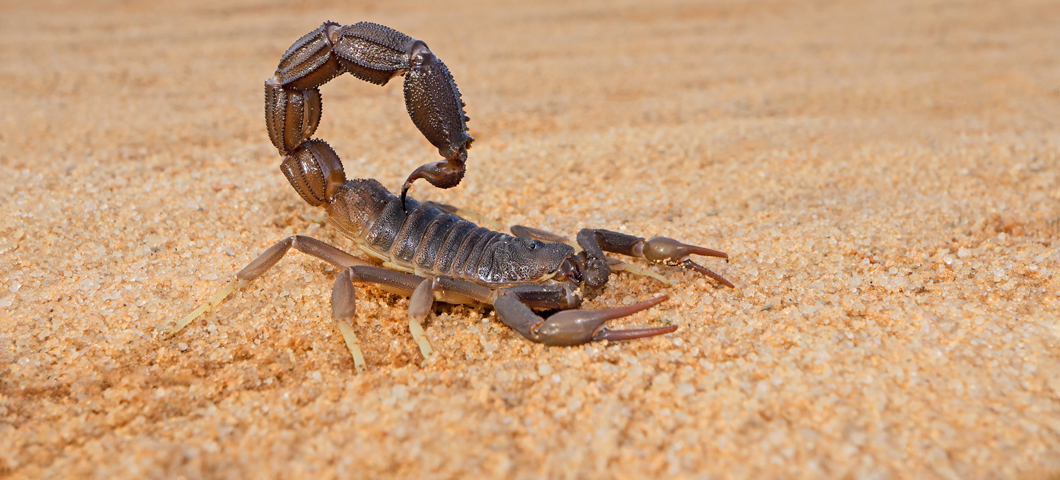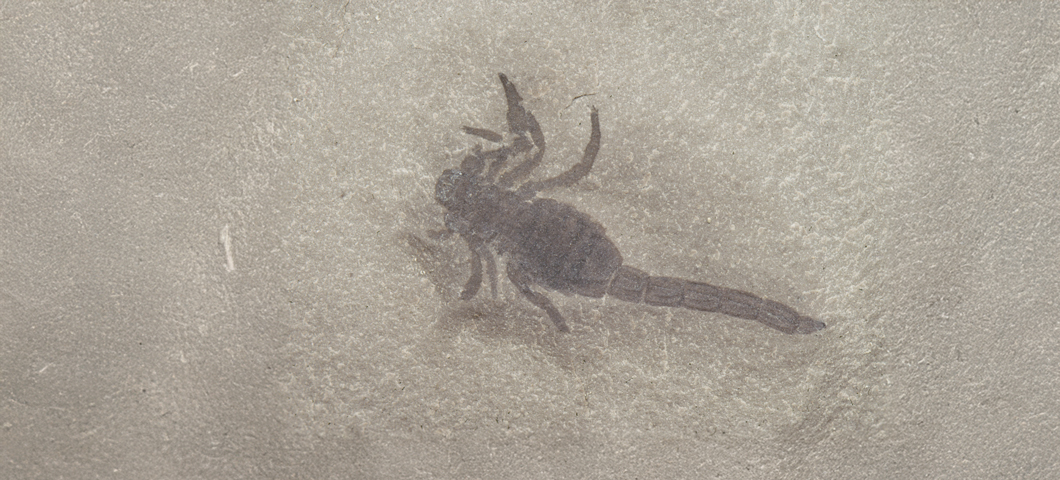Scorpions may look like tiny lobsters, but they’re far from it. A relative of the spider, these ancient creatures pack a of wallop of a punch when it comes to poison.
There were scorpions on Earth long before there were dinosaurs. Some scorpion fossils are hundreds of millions of years old. Scorpions of today look very much like their ancestors, only smaller. You might find these lobster look-alikes in deserts and grasslands. They’re also found in tropical rain forests all over the world. Many live in snug burrows they either dig themselves or find already made.
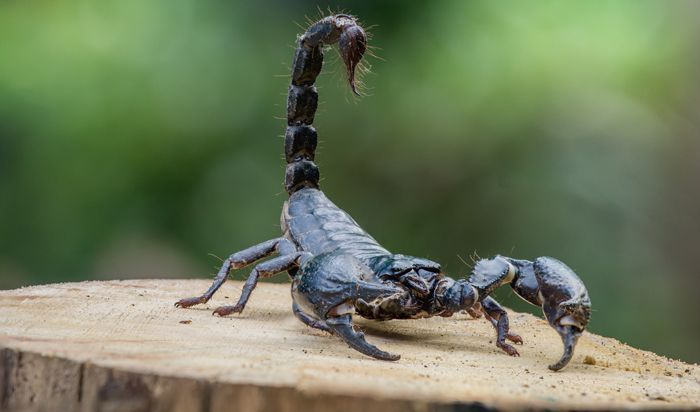
◀ The 1,500 or so different kinds of scorpions all have two claws and a curved tail with a poisonous tip. Scorpions can hold their breath for up to six days. Their lungs are called book lungs. They’re made up of thin overlapping flaps, like the pages in a book. The “pages” hold oxygen.
A scorpion’s claw has two parts, a pedipalp and a pincer. The pedipalp has hairs that sense touch and vibrations. The pincer is a claw that works like a pair of pliers. When a scorpion senses a spider or other tasty meal within reach, it grabs and crushes it with its pincer. ▶
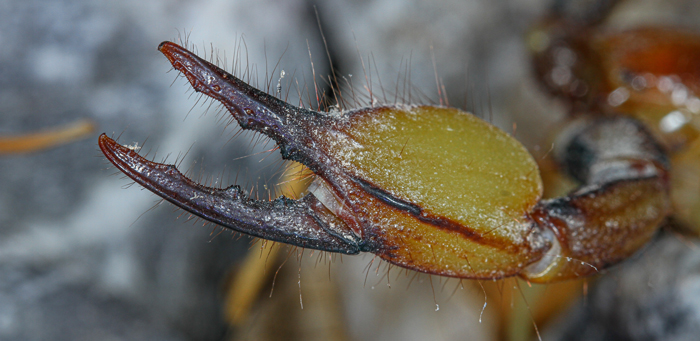
Check It Out!
How dangerous is a scorpion's sting?
The venom in a scorpion’s sting contains many different poisons. Some act against vertebrates, or animals with backbones. Others act against invertebrates, or animals without backbones. The venom attacks nerve cells and paralyzes its victim. Most scorpions have venom that’s not life-threatening to people. Even so, a scorpion sting is likely to feel painful, like a bee sting.
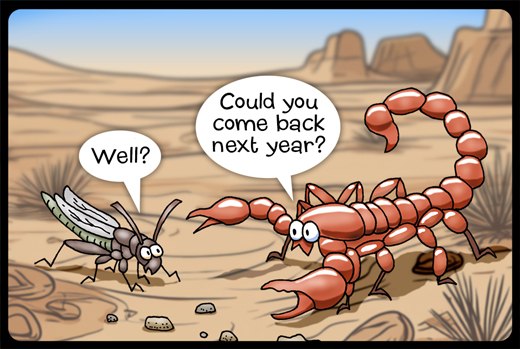
◀ Scorpions can take in huge amounts of food at one time. But they have a low metabolic rate. (Metabolic rate is the speed a body changes food into energy.) Scorpions eat every two to three weeks. They’ve been known to survive eating only one insect per year. Or go a year without any food at all!
▲ Scorpions are prey for predators like meerkats, grasshopper mice, and opossums. But what about their venom? Different predators have different approaches. A grasshopper mouse turns the venom into a painkiller. Opossums and meerkats are immune to the venom. Plus, they’re able to remove the scorpion’s stinger and brush away the venom.
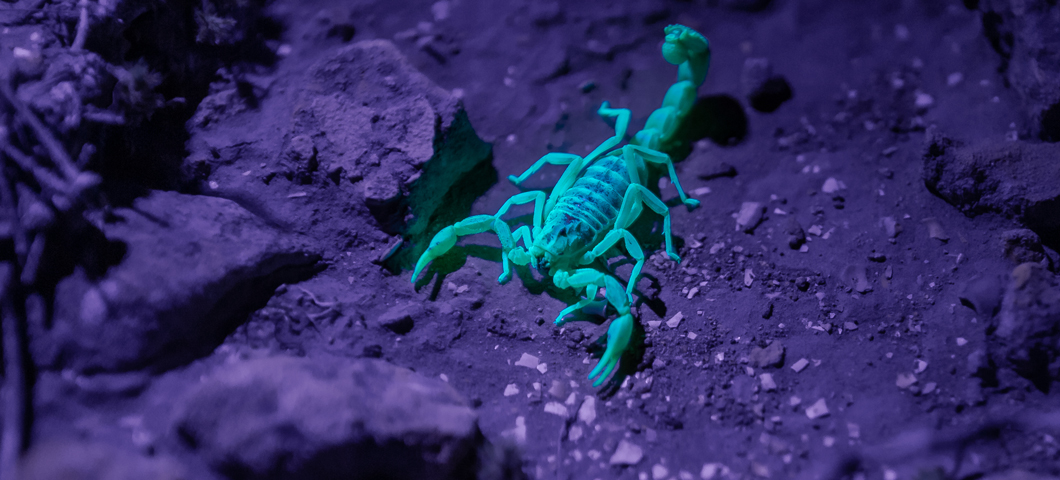
If you shine an ultraviolet light on a scorpion at night, it glows due to chemicals in its shell.
